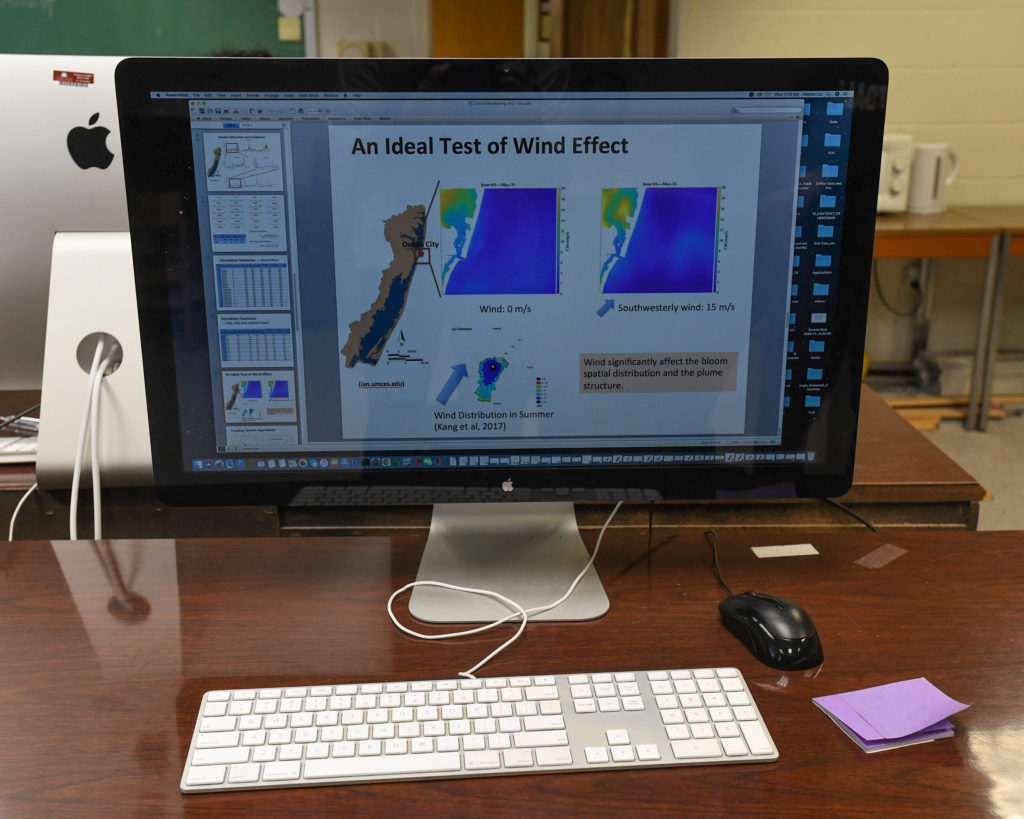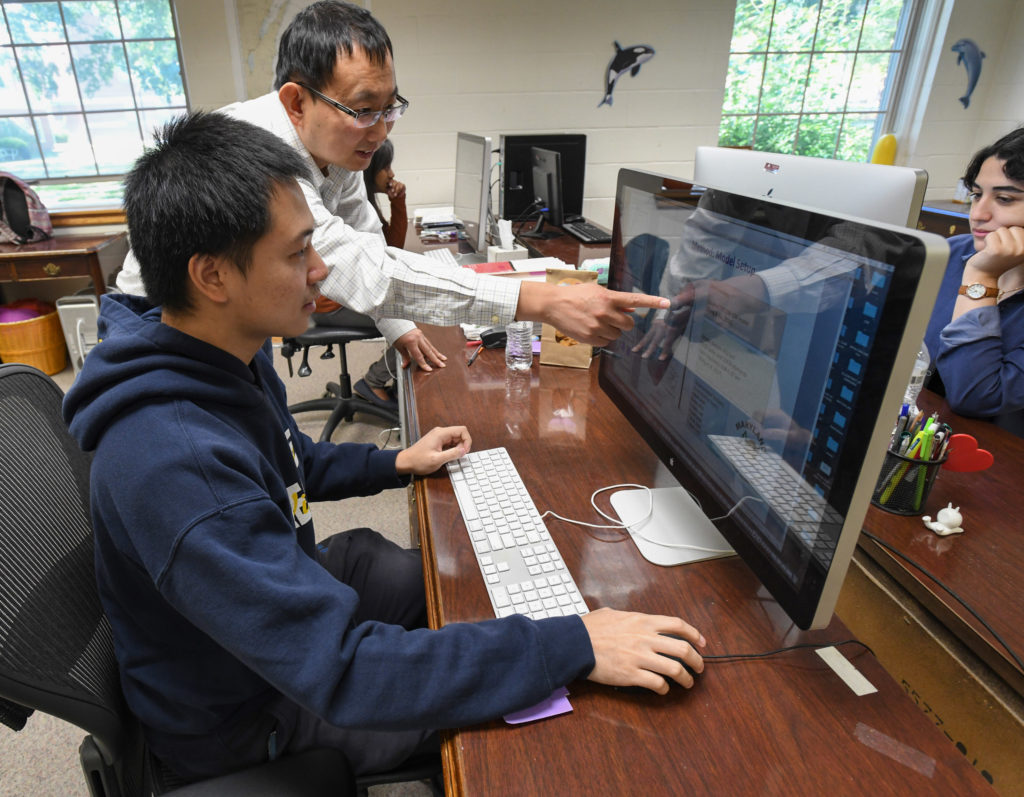
Underrepresented students in marine sciences at the University of Maryland Eastern Shore will benefit from a three-year half a million dollar National Science Foundation grant. The Ocean Sciences Excellence in Research grant will boost the university’s capacity to give students research opportunities while helping solve a real-world challenge, understanding and projecting the future of freshwater plume dynamics under climate change scenarios that will lead to a better understanding of the nutrient distribution and productivity zone of a large lake.
“This project will help expand a pool of minority students in the field by supporting the only physical oceanography numerical modeling laboratory within the HBCU community in the continental U.S.,” said Dr. Meng Xia, a professor in UMES’ Department of Natural Sciences. “Undergraduates will be afforded opportunities to integrate research with their education through inquiry-based learning.”
Xia, who specializes in river plume and estuary dynamics, is turning his attention to understanding the factors governing plume behavior in a large lake (Lake Michigan) after completing a project focusing on the Maryland Coastal Bays. Using numerical hydrodynamic-wave-ice modeling, Xia will now study how the current, waves and ice in the lake influence plumes and how they, in turn, are influenced. The experiments, he said, will separate the factors in the complex system governing plume interactions and reveal those of importance to dominating the impacts on plume behavior.
River plumes, which are seasonally active in intertidal zones, are an important and not fully understood phenomenon for the circulation of an estuarine, Xia said. Lake Michigan, for example, experiences a 10 km-wide plume each spring on its southern shore that resuspends materials extending over 100 km. The temperate climate of southern Lake Michigan is potentially influenced by the colder climate and ice covers in its northern basin. The southern basin is intervened by the denser population in the surroundings and prone to water pollution though the riverine channels.
Xia’s research, along with the contributions of undergraduate and graduate students and a post-doctoral fellow, Dr. Bishnupriya Sahoo, will benefit the broader field of physical oceanography.
Gail Stephens, agricultural communications and media associate, University of Maryland Eastern Shore, School of Agricultural and Natural Sciences, gcstephens@umes.edu, 410-621-3850.
Photos by Todd Dudek, agricultural communications, University of Maryland Eastern Shore, School of Agricultural and Natural Sciences, tdudek@umes.edu





